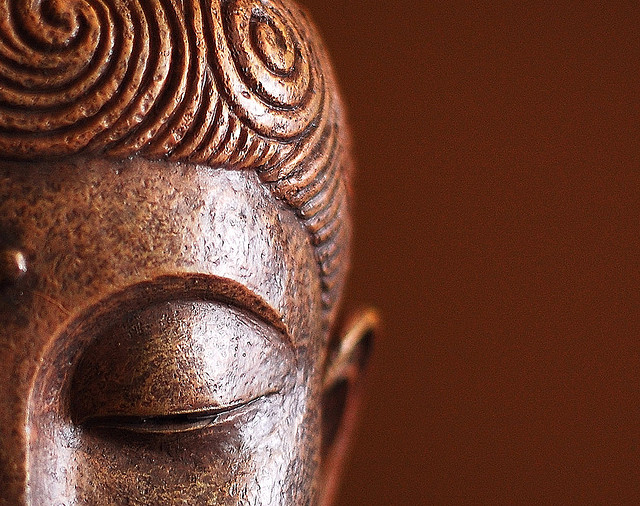Meditation has long been an issue for me.
Not because I couldn’t “achieve the state,” but because I would achieve it as soon as I sat down and closed my eyes.
This started back when I was a teenager, and since then my main goal was to learn how to understand the processes of meditation, to consciously direct a meditation rather than allow consciousness to leave my body spontaneously when that was not my intention.
Years of studying this phenomenon have allowed me to systematically analyze and understand what meditation is and how it happens. That is what I want to share with you.
To begin with, many people think of meditation as the process of expanding consciousness. I, on the other hand, consider meditation to be the process of narrowing the consciousness, where the perceiving consciousness “leaves” the physical, energetic and mental planes, one after the other, until it arrives fully present on the Soul plane and remains there for some time.
In a typical waking state, a person’s conscious perception exists simultaneously on four planes: the physical, energetic, mental and Soul. In the final stage of the meditative process, on the other hand, consciousness exists only on the Soul plane and perceives only this plane. The other three planes switch to autonomous mode: without interference from conscious perception, the mental plane relaxes, and both the energy plane and the physical body are restored. After a quality meditative session, we feel rested, healed and satiated.
The Meditative Process, or narrowing of perceptive consciousness, consists of three consecutive stages:
- Perception leaves the physical plane—the “disappearance” of the body.”
- Perception leaves the energetic plane—the “disappearance” of breathing.”
- Perception leaves the mental plane—the “disappearance” of the mind.
After this, perception remains on just one plane, the Soul plane. We do not touch on the highest, Spirit plane, because working on this plane is unnecessary and dangerous for the majority of incarnated beings.
To begin the meditative process, sit in any comfortable position. You can sit in an armchair, or a sofa, or lean against your headboard and extend your legs. If you really want to, you can sit in the “lotus” pose, although I do not recommend it (this pose is so physically challenging, even the most flexible practitioners have difficulty staying here longer than 20 minutes). No matter what position you choose, keep your spine straight.
To avoid straining your back muscles—and to be able to sit long enough—tuck the lower part of your sacrum inward, eliminating excess bend in your lower back. Besides helping you avoid low back pain, this also makes the position more stable and alleviates other muscle strain.
Once you have found your position, close your eyes and shift your attention inward:
1. Sit motionlessly, without responding to discomfort or other physical impulses. It’s important not to scratch, fidget, sniffle, change arm positions and so on. You have to simply wait out this period of an excited nervous system sending out various impulses.
You will be uncomfortable. But anyone can do this. Gently “overpower yourself” and remain motionless, despite the impulses arising in the mind-body. Typically this period lasts 20-40 minutes. Just wait it out.
Don’t do anything with your thoughts. It doesn’t matter at all if they exist or not, how many there are, or what they are. Your only task is not to move. Everything else doesn’t matter. As the mind-body calms, the impulses become fewer and the less you feel your body, until it almost completely “disappears” from your senses and your perception. As the gradual “disappearance of the body” process begins, I always take a few slow, deep, smooth breaths inward, which pulls the energy from the lower energy centers upward and helps to speed up this process.
2. The “disappearance” of the body automatically calms the breathing as well; breathing becomes more and more superficial, light and shallow, until it almost completely “disappears” from your perception.
Do not be afraid if it seems as though you have stopped breathing. You haven’t stopped, but the breath amplitude has been diminished as far as possible. This is how it should be. Don’t do anything with your breathing. Do not control it, or hold it or perform any other deliberate actions at this stage, as that would merely hinder the naturally occurring process.
Continue to focus your attention only on the motionlessness of your body, which will naturally cause the “disappearance” of breathing. Again, the presence of any thoughts does not matter. All that is needed is motionlessness and a lower frequency of mind-body impulses.
3. The “disappearance” of breathing automatically calms the mental plane as well, until that plane completely “disappears” from your perception. Many of us are unaccustomed to existing in a state of non-mind, so at first it may last for just a split second, after which you will be thrown back to one of the lower planes: you will again feel an impulse from the physical body or from your breathing, or feel your mental effort resuming. With time and practice, this will change.
Meditation, like life itself, is not a result but a process, the process of transferring consciousness from one level to another.
Every time you meditate, you train the consciousness “muscle” to move between various planes: going forward or backward, knowing which plane you are on, and feeling where to go next. The process itself is a rich spiritual experience, which can teach you many things and allows you to learn much about yourself.
~
Love elephant and want to go steady?
Sign up for our (curated) daily and weekly newsletters!
Editor: Emily Bartran
Photo: Jon Fife/Flickr



Read 25 comments and reply